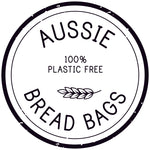There’s a wise old saying… you never know the worth of water until your well runs dry.
While not many people have wells now-a-days, the essence of the saying still applies. This is particularly valid when we live in the driest populated continent on Earth. Australia’s average rainfall is a scant 470mm per year.

Source: wikipedia.com
But us Australians don’t let that worry us! We are right up there with the highest users of water per capita in the world. We use an average of 100,000L of water per person each year. Leaving quite a gap between 100,000L and 470mm!
While we aren’t totally reliant on rainwater to meet our water needs, we do still need to learn to be careful with water. Available fresh water in Australia is expected to reduce over the coming years with rainfall reducing due to climate change. We really do need to conserve as much as we can.
How do we do this?
Firstly, measuring the amount of water we use in our homes will give us a base to show savings. And this is quite easy. Just take a look at your water bill (or ask your rental agency for a copy). This will have the amount of water you use and a comparison against other homes in your suburb.
Where do we use the water then?
Our homes are directly responsible for about 12% of water usage each year. While this is not a large percentage, reducing it can save a significant amount of water for the future, not to mention money in water charges.
What are the biggest users of water inside our homes? These are typically our showers, responsible for 34% of indoor water usage in the average home, followed by toilets at 26% and then laundries at 23%. To make a change in our homes, lets target these with some of the following water conserving actions:
- Use water efficient tapware and appliances everywhere possible in our homes; the higher the WELS rating, the more water efficient the tap, appliance or system
- Use the half flush as much as possible in the loo
- Take shorter showers and don’t turn the shower water pressure up too high
- Turn off the tap while you are brushing your teeth or lathering the soap on your hands
- If you are building your home, install a rainwater tank and plumb it so that the water from it supplies your laundry and toilets

Source: winton.qld.gov.au
But what about outside? This is where 40% of household water is typically used.
As a population, we generally use drinkable water for everything inside and outside our homes. But we don’t really need to do this.
One option for gardens is using non-potable water such as tank or rainwater to keep our gardens and lawns lush. Another option is to capture the grey water from showers, washing, kitchen, etc in your home and use it to water the gardens and lawns, or cleaning the car, the boat or the house.
If you are landscaping, following a build or just updating your yard, use water sensitive urban design. This imitates the natural water balance that was present on the land prior to building or landscaping. Techniques include using permeable paving, filtration garden beds and swales or soakwells that hold stormwater, reducing run off and allow the water to soak back into the soil.

Source: gardners.com
Once again, these actions will not only save water for the future, they will also save you money! Once the initial investment in a grey water system or WELS rated taps or appliances is over, you can get some water for free! Imagine the savings!
